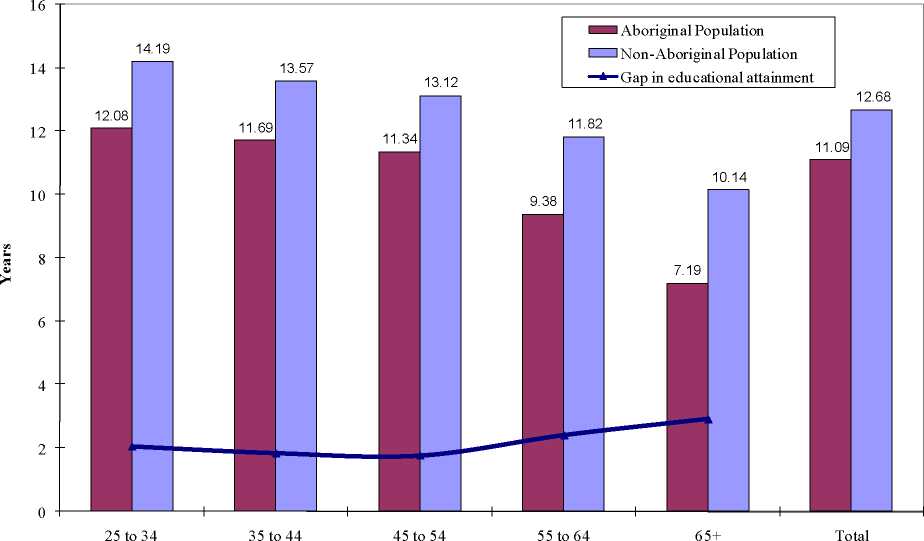39
The picture is not as upbeat for Aboriginal Canadians if we consider only the proportion
of those who actually obtained a post-secondary certificate or diploma. In 2001, the proportion of
Aboriginal high school graduates who successfully completed further studies (56.8 per cent) was
seven percentage points lower than for non-Aboriginal Canadians (63.8 per cent). For college,
the drop-out rate of Aboriginal was 34.3 per cent in 2001 compared to only 25.3 per cent for
non-Aboriginal Canadians, a 8.9 percentage points difference. At the university level, the
difference was even larger (15.8 percentage points), with a 32.7 per cent drop-out rate for
Aboriginal Canadians compared to only 16.8 per cent for the non-Aboriginal population in 2001.
In 2001, 8.9 per cent of Aboriginal Canadians aged 15 and over had obtained a university
degree, 16.8 per cent a college certification or diploma and 3.9 per cent a trade certificate. Trades
seem to be quite attractive to Aboriginal Canadians compared to their non-Aboriginal
counterparts, since only 3.5 per cent of non-Aboriginals had that type of education. However,
much more non-Aboriginal Canadians had other types of post-secondary education: 21.8 per cent
graduated from university and 18.8 per cent from college. There were 9.5 per cent of Aboriginal
Canadians with high school diploma as their highest level of educational attainment compared to
14.2 per cent of non-Aboriginal Canadians.
Chart 7b: Average Number of Years of Schooling, by Age Group, 2001

Source: Census 2001
Many Aboriginal Canadians enrol in post-secondary institutions, but do not finish their
course of studies. Even though 13.2 per cent of the Aboriginal population went to university,
only around two thirds of them graduated (8.9 per cent of the Aboriginal population). Hence, 4.3
per cent of the Aboriginal population did not graduate after beginning their university education.
For the non-Aboriginal population, the proportion of the population not finishing university was
More intriguing information
1. Anti Microbial Resistance Profile of E. coli isolates From Tropical Free Range Chickens2. The name is absent
3. EXPANDING HIGHER EDUCATION IN THE U.K: FROM ‘SYSTEM SLOWDOWN’ TO ‘SYSTEM ACCELERATION’
4. Mergers under endogenous minimum quality standard: a note
5. The name is absent
6. Making International Human Rights Protection More Effective: A Rational-Choice Approach to the Effectiveness of Ius Standi Provisions
7. fMRI Investigation of Cortical and Subcortical Networks in the Learning of Abstract and Effector-Specific Representations of Motor Sequences
8. Epistemology and conceptual resources for the development of learning technologies
9. The name is absent
10. Forecasting Financial Crises and Contagion in Asia using Dynamic Factor Analysis